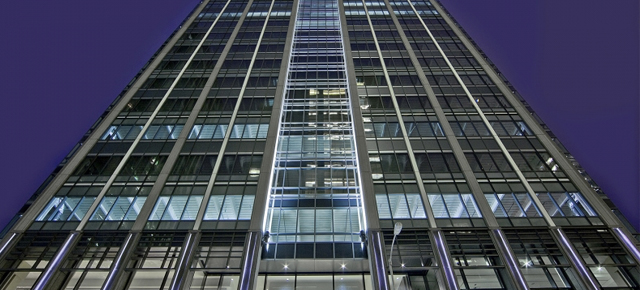
California’s Proposition 13 provides a statutory limit on annual increases to the assessed value of a property. Basically, the state general levy tax rate is limited to 1.0% of the property’s value and cannot increase more than 2.0% per year, unless the building is sold, more than 50% is transferred, or substantial new construction is completed. (Note that the tax rate can and usually does exceed 1% because there is no limitation on municipal tax rates or special assessments).
So what does this mean to California’s office tenants? If the building you occupy sells to a new owner during your tenancy, the building could be reassessed at a much higher value than when you initially moved in, and you could get stuck with a substantial increased tax bill passthrough.
Let’s assume that your company leases 10,000 square feet in a 100,000 square foot building (10% pro rata share) and signs a 5-year lease in 2013. Let’s also assume that the building hasn’t been sold in a while, and therefore has a low property tax assessment. For our example, we’ll pretend that the building is currently valued at $200 per square foot, or, $20,000,000, and that in 2013 property taxes for the building were approximately $300,000 (at a rate of 1.5%).
Increases in operating expenses such as property taxes are passed through to tenants and collected according to the tenants’ pro rata share. Therefore, when taxes are increased by 2.0% to $306,000 in 2014, you will have to pay your 10% share of the $6,000 increase, or $600.
However, let’s say that in 2014 the owner of your building decides to sell it to an investor for $50,000,000 ($500/SF), the property is reassessed and taxed on the new value, and the property taxes are increased to $750,000. In this example, the increase in property taxes from 2013 to 2014 would be $444,000 and since your firm occupies 10% of the building, you’d get handed a bill for $44,000. And the fun part? You’ll get to pay that bill every year until your term runs out.
So is there any way to avoid this? Yes, but it’s highly unlikely. If you’re a large tenant in a soft market, you may be successful in negotiating “Prop 13 Protection” into your lease, whereby any “Due On Sale” taxes cannot be passed through to you. Building owners are extremely resistant to agreeing to this, however, as it adversely affects the selling price. Another strategy, if you know a sale is imminent, is to try and get your Base Year set to the year of the anticipated sale which could be achieved in a new lease or upon a renewal.
For everyone else, it is crucial that you do your homework before signing a new lease or renewing your existing one. Being well informed is the name of the game. Assuming you do business in a market that continues to appreciate, the more time that has passed since a property’s last reassessment, the larger the increase will be upon a sale. Think of it like a rubber band; the more you stretch it, the more it’s going to hurt when it snaps.
Knowing not only when the subject property was last reassessed but also the likelihood the ownership could change hands during your tenancy should be a top priority and can help you avoid egregious and unexpected pass through expenses that most all office tenants are exposed to.



 If you’re an office tenant in San Francisco (or any other market where vacancy is plummeting), there’s no doubt you’ll probably face a substantial rent hike upon your upcoming lease expiration. Since 2010, rents in the City have risen 39% and in 2012 alone, 24%; representing the biggest gain of any market in the world.
If you’re an office tenant in San Francisco (or any other market where vacancy is plummeting), there’s no doubt you’ll probably face a substantial rent hike upon your upcoming lease expiration. Since 2010, rents in the City have risen 39% and in 2012 alone, 24%; representing the biggest gain of any market in the world.




 The Restoration Clause is a seemingly harmless, fluffy little kitty that sleeps tucked away within an office lease… until you reach out to pet it and it jumps on your neck and claws your eyes out.
The Restoration Clause is a seemingly harmless, fluffy little kitty that sleeps tucked away within an office lease… until you reach out to pet it and it jumps on your neck and claws your eyes out.